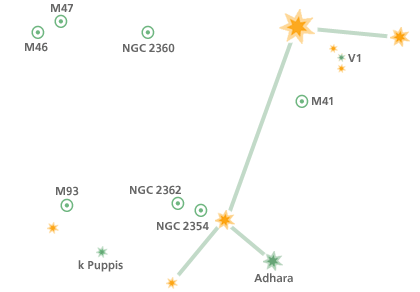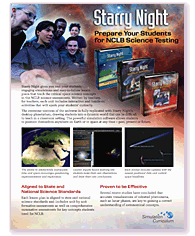 |
||||||||||||||||||||||||||||||||||||||||||||||||||||||||||||||||||||||||||||||||||||||||||||||||||||||||||||||||||||
For education orders please call 1-877-290-8256. Welcome again to our monthly newsletter with features on exciting celestial events, product reviews, tips & tricks, and a monthly sky calendar. We hope you enjoy it!
New Horizons The new version of Starry Night comes with a number of new horizon panoramas. It’s always helpful to view the skies from a familiar location with familiar sights around the horizon. I spent many of my best years as a graduate student at the University of Toronto, so I was delighted to find a panorama which placed me right in the middle of the large circular grassy field at the center of campus.
This view looking south towards the CN Tower shows Orion and Sirius over the dome of Convocation Hall, where I received a couple of degrees. The Faculty of Medicine is to the left, where in 1999 joint meetings were held for the Royal Astronomical Society of Canada, the Association of Variable Star Observers, and the Astronomical Society of the Pacific. As you can see in this image, Starry Night does all too good a job at replicating Toronto’s light polluted skies! Next stop is Bay City, Michigan, home of Delta College.
One of the most striking features of the Delta campus is the stunning building which houses their planetarium, shown here below the winter circumpolar constellations. Cassiopeia is on the left, Ursa Major with the Big Dipper on the right, and Ursa Minor and Polaris in the center. One of the pleasures of a program like Starry Night is the freedom it gives you to travel in time and space. Do you wonder what the Apollo 15 astronauts saw when the looked out of the Lunar Module in late July 1971? Starry Night will take you there.
There’s Orion rising over the Mons Hadley! Fast forward to January 4, 2004. The first Mars Exploration Rover, Spirit, has just landed in the crater Gusev on Mars. The distant Sun sets, and the reddish sky fills with stars. Look in the east:
There’s Orion, at an odd angle because Mars’ poles point in different directions than we’re used to on Earth. And there, just above the Pleiades and the Hyades is Mars’ moon Phobos. Look closely, and you’ll see that Phobos is actually setting in the east, something that can only happen with a fast-moving moon like Phobos! 3D Galaxies Starry Night has featured the Tully catalog of galaxies for quite a few years. This depicts about 28, 000 galaxies in three dimensions, just as Starry Night depicts local stars in three dimensions. What has changed in version 6.4 is the rendering of the galaxies, now much more accurate. It’s simple to take a tour of the galaxies just by putting your mouse pointer on the up altitude button and holding it down. By selecting your starting point on Earth, you can travel to specific locations. I started out by travelling straight up from my home location in Ontario. At 63,000 light years up, I got a wonderful bird’s eye view of the Milky Way Galaxy:
I’ve marked the Sun’s location. If you look closely, you can see what looks like a globular cluster around the Sun. This is actually all the stars in Starry Night compressed into a tiny volume, since all the stars we see at night are in fact very close to the Sun on a galactic scale. What looks like a scattering of background stars is actually a scattering of background galaxies, all rendered in their correct positions in three dimensional space by Starry Night. I then returned to Earth and chose my location carefully so that the Andromeda Galaxy was almost overhead. Then I hit the altitude button again and this time stopped at 2 million light years. There was the Andromeda Galaxy. But wait...with the location scroller (one of the alternative cursors) I could control the angle at which I viewed Andromeda. Instead of its familiar angled view, I could see it as a face-on spiral:
Or in an edge-on view:
Again, the spots in the background are galaxies, not stars. I encourage you to explore these new features of Starry Night along with the others new to this version! Geoff Gaherty
The Local Hour Angle of an object is the angular distance of that object west of the observer's meridian. It is usually measured in hours, minutes and seconds, where 1.0 hour equals 15 degrees. Thus if the planet Jupiter is 30 degrees west of the observer's meridian, its Local Hour Angle (LHA) is 2.0 hours. And if the LHA of Venus is 23 hours, then it is 15 degrees east of the meridian. (See below)
Observers can use LHAs to plan their observations since celestial objects are often best seen when near the meridian.
Of special interest is the LHA of the Sun. Local noon occurs when the Sun is on the meridian, i.e. its LHA = 0 hrs. But as the graphic shows, in Boston the Sun is on the meridian at 11:42 am on December 21st. Starry Night, like your watch, shows Standard Time which is the same over a wide region (approximately 15 degrees in longitude). This is much more convenient than Local Time which varies from location to location. So the LHA of the Sun in Boston is different from its LHA in New York City even though the clock shows the same time.
In version 6.4 of Starry Night, Local Hour Angles can be shown for major solar system objects. In the "Find" pane use the drop-down contextual menu for a planet and click on “Hour Angle Lines” to show LHAs in the main window. You can also watch a short video at the following URL: Further Study Answer to last month's question: Herb Koller
The Local Universe A bounding box surrounds the 28,000 galaxies in the 3D Tully Galaxy Database. The Milky Way has been highlighted. Pedro Braganca
At Mag -1.5, almost everyone knows that Sirius is the brightest star in the night sky. You may notice it driving home from work: visible from early dusk, it sparkles brilliantly above the southern horizon. What many people don't realize is that Sirius is actually a double star. Sirius B is a challenging target, just 5" from Sirius and quite dim at Mag 8.5. It requires excellent optics but, if you can nail it, it's surely a feather in your cap. A little to the west of Sirius is a three star asterism, with the central star, V1, being an easy, pretty double separated by 17". M41 (also known as the Little Beehive) is a fine open cluster lying about 2,000 lightyears from the back of your eyeball. It has about 25 bright stars spattered across a field about the size of a full moon; in reality, they're spread over an area 20 lightyears in width. Bright enough to be sometimes visible to the naked eye (Aristotle is said to have noticed it around 325 B.C.) M41 is a good target for binos or low magnification in your scope. M46 and M47 are two open clusters just over 1° apart, making comparison very easy. Both are about 20 million years old but they're not connected in any way: M46 hangs in space about 5,000 lightyears distant, while M47 is closer at 1,700 lightyears. Of special interest is the planetary nebula that seems to be embedded near M46's center. Although the nebula is probably not actually part of the cluster (it simply lies along the same line of sight), it makes for a good opportunity to see two different types of deep sky object at the same time. In larger scopes, NGC 2360 (a.k.a. Caldwell 58) is a pleasing open cluster almost half way between M46 and Sirius. M93, the winter Butterfly Cluster, is a rich 6th Mag open cluster with about 80 visible stars. It's core resembles an arrowhead. While you're in the area take a look at k Puppis, a nice bright double. NGC 2362, the Mexican Jumping Star (a.k.a. Caldwell 64), and NGC 2354 are another pair of closely placed open clusters worth comparing. Finally, Mag 1.5 Adhara has a Mag 7.5 double just 7.5" due south. Adhara is a main sequence star that shines 9,000 times as brightly as our own sun. Good thing it's 432 lightyears away. Sean O'Dwyer
|
FEB 2011
|
|||||||||||||||||||||||||||||||||||||||||||||||||||||||||||||||||||||||||||||||||||||||||||||||||||||||||||||||||||

|
||||||||||||||||||||||||||||||||||||||||||||||||||||||||||||||||||||||||||||||||||||||||||||||||||||||||||||||||||||
|
||||||||||||||||||||||||||||||||||||||||||||||||||||||||||||||||||||||||||||||||||||||||||||||||||||||||||||||||||||

 EDUCATION ORDERS 1-877-290-8256
EDUCATION ORDERS 1-877-290-8256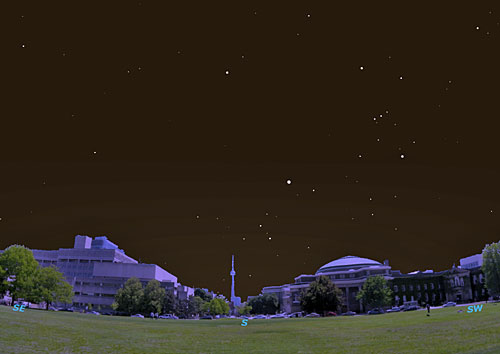
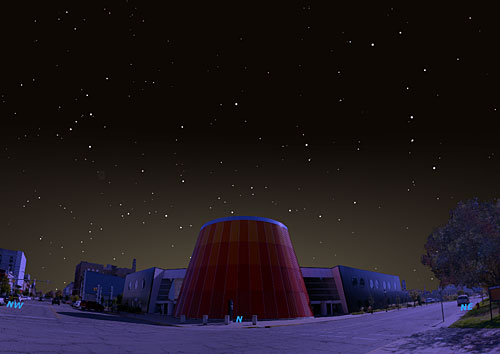
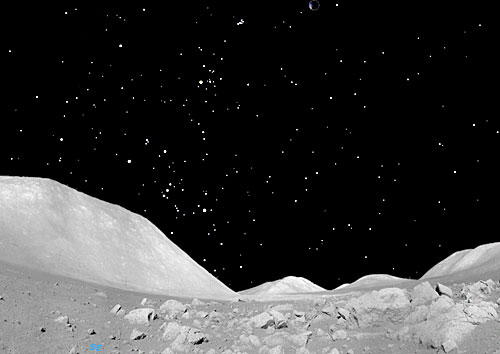
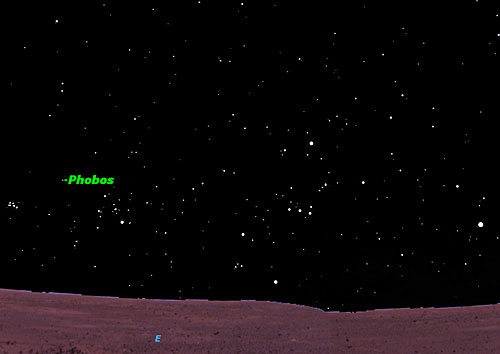
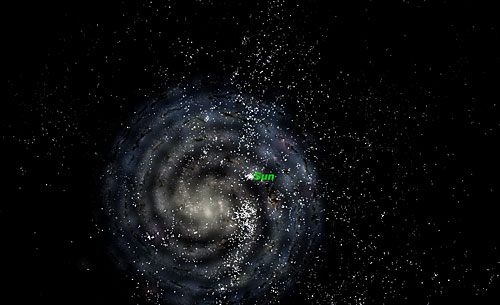
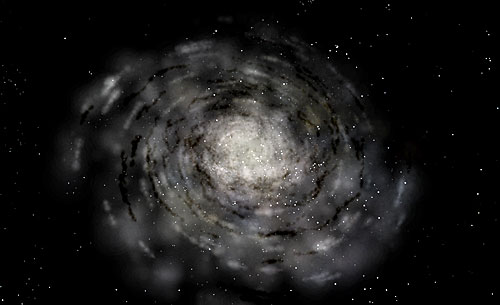
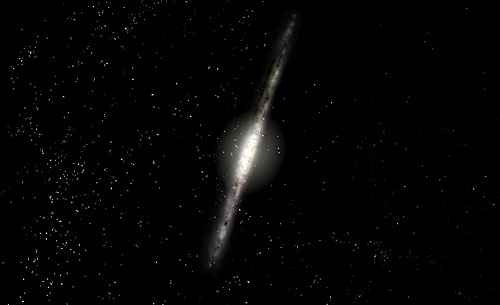

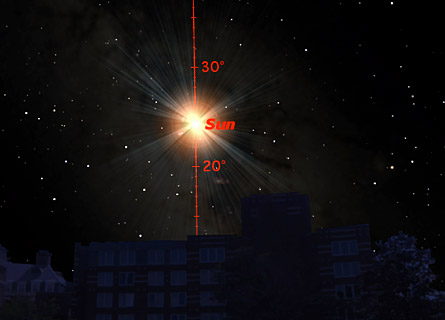
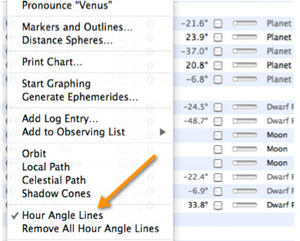 Use your copy of Starry Night to explore the relationship between the LHA of the Sun at 12 pm and location as well as the time of year.
Use your copy of Starry Night to explore the relationship between the LHA of the Sun at 12 pm and location as well as the time of year.